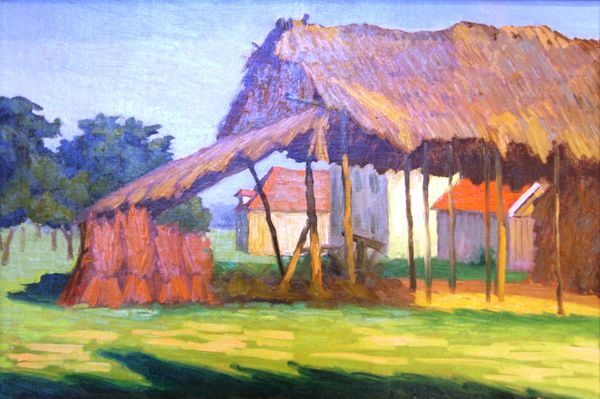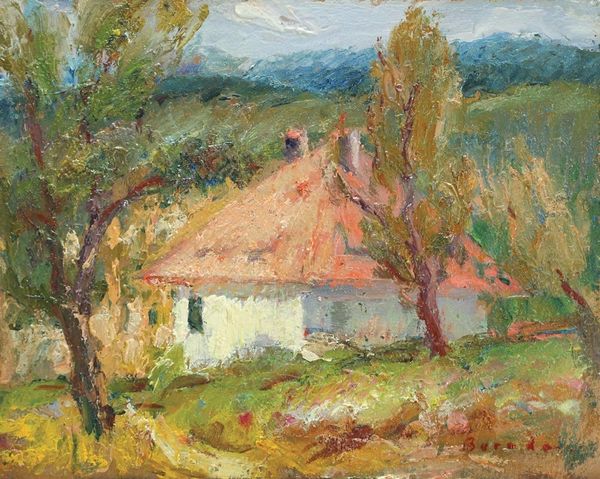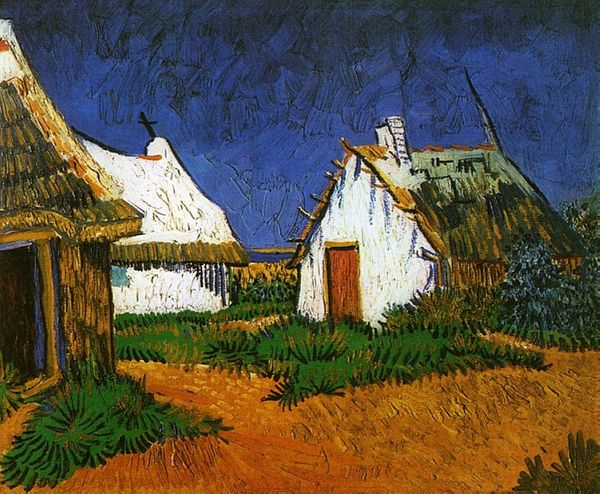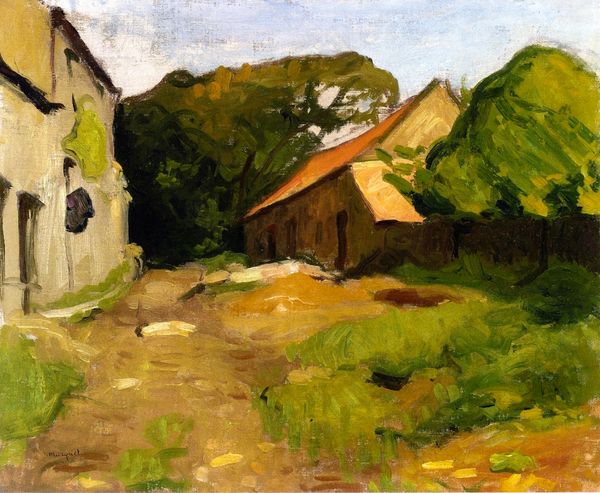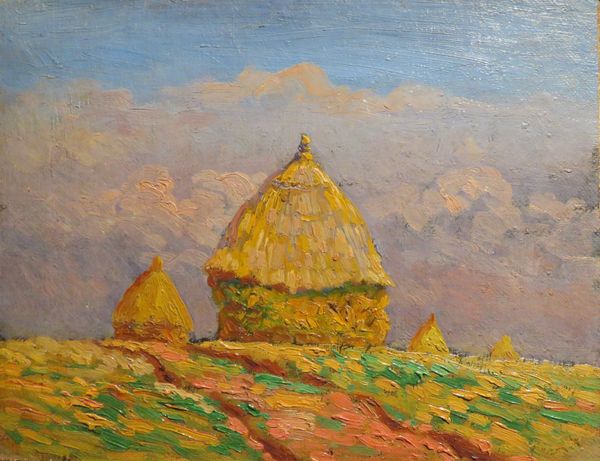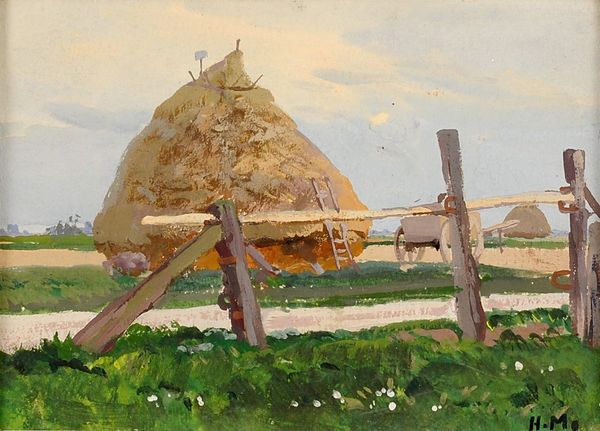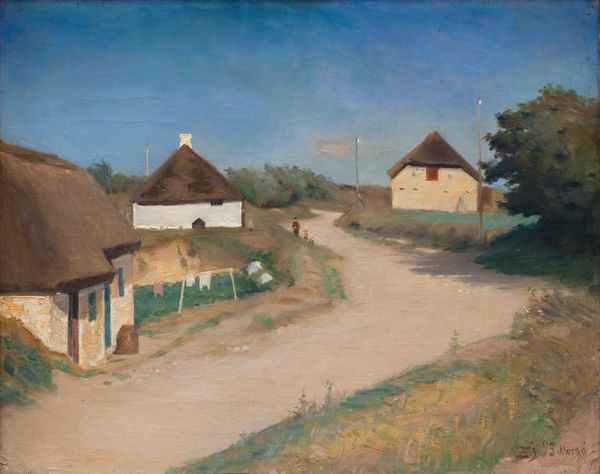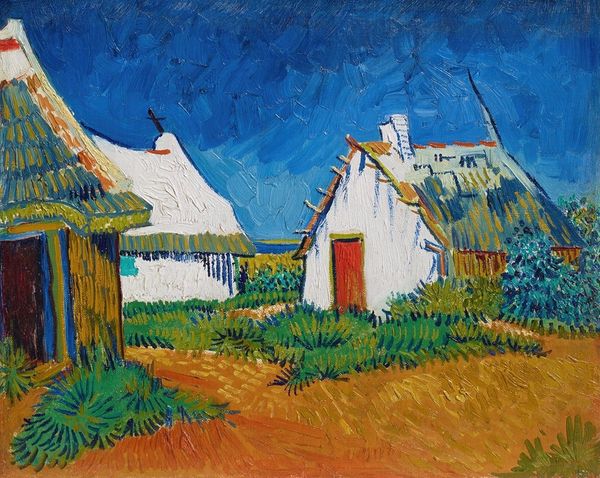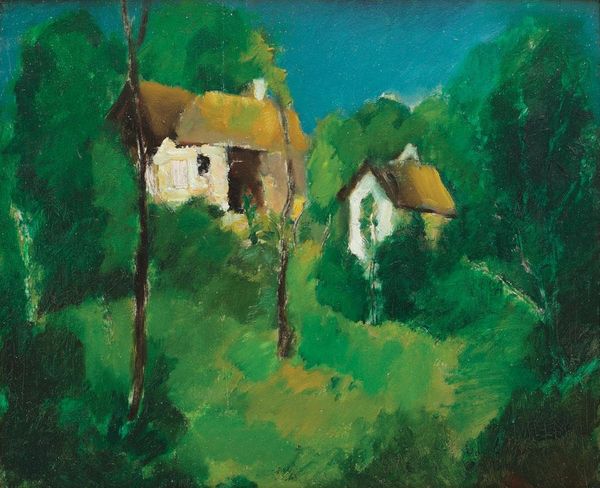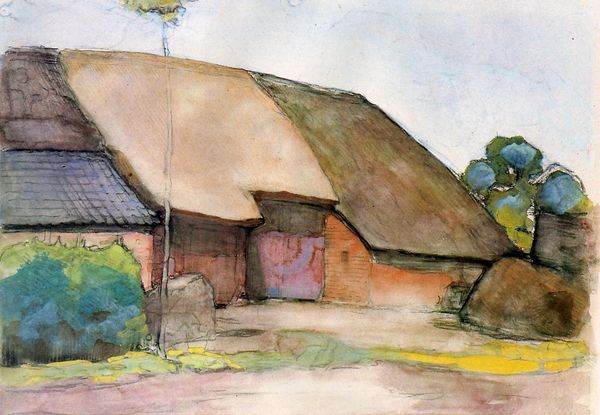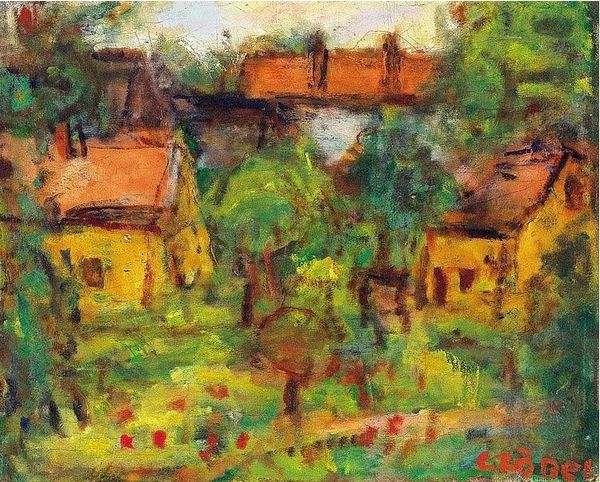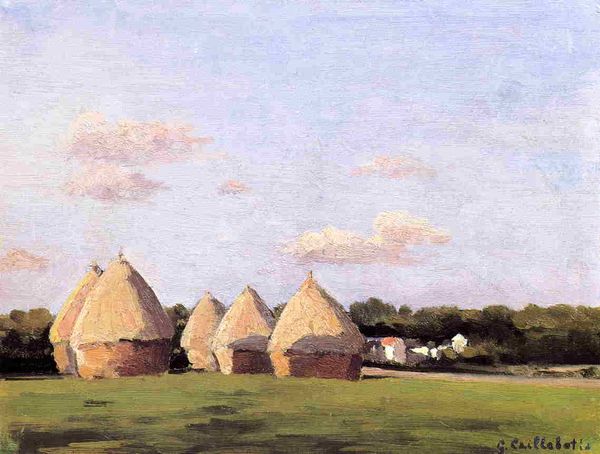
painting, plein-air, oil-paint
painting
impressionism
plein-air
oil-paint
landscape
impressionist landscape
oil painting
post-impressionism
Copyright: Public domain
Editor: This painting, "La Meule Près Des Maisons," which translates to "The Haystack Near the Houses", is by Léo Gausson, created with oil paints in what seems to be the Post-Impressionist style. I find its rendering of light quite striking, almost like a hazy summer day. How do you read this work? Curator: It’s interesting you mention the light. Consider how the Post-Impressionists were reacting to—and perhaps rebelling against—the scientific precision the Impressionists sought with light. What strikes me here is the implied relationship between the rural and the domestic, and what that represents within the socio-economic context of late 19th-century France. Does it suggest a harmony, or something else? Editor: Something else, perhaps? I’m not sure I see the conflict. Curator: Think about the increasing industrialization during that period, and the simultaneous idealization—and sometimes romanticization—of rural life in art and literature. This painting, while seemingly bucolic, quietly positions the agricultural in relation to a rapidly changing society. Is it a celebration or an elegy? Or perhaps both? The “haystack” became quite the trend in late 1800's. Editor: That makes me wonder if Gausson was consciously participating in that trend, almost as a comment on it. Curator: Precisely. And to what effect? Think about who these paintings were made for – a burgeoning middle class, eager to consume images of a lifestyle that was quickly vanishing, replaced with modern ideals, technology and economic boom. Editor: So, Gausson's painting might be less about the haystack itself and more about the social dynamics around it? Curator: Exactly. It reflects the complex interplay between art, society, and economics. It makes you consider not just what is depicted, but who is doing the depicting, and for whom. Editor: I didn't think I'd be pondering class dynamics when looking at a haystack! Curator: That's the power of art history, isn't it? Revealing hidden dialogues within seemingly simple scenes.
Comments
No comments
Be the first to comment and join the conversation on the ultimate creative platform.
